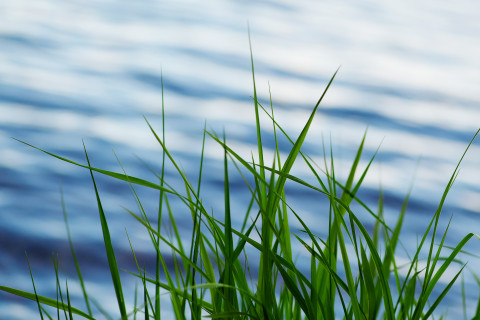In his doctoral thesis, Ananda Tiwari, M.Sc., tested the performance of the current bathing water monitoring approaches and utilized novel molecular methods and high-throughput sequencing to unveil fecal pollution sources and bacterial communities in surface water resources around Finland.
Rapid and precise monitoring methods of water quality are needed to secure the health of water users and for assessing waterborne human health risks. As part of his PhD studies, Tiwari validated the use of most-probable number method based on defined substrate technology (Colilert-18, currently described as international standard ISO 9308-2) as an alternate method for counting Escherichia coli at Finnish bathing sites. Further, he defined for the first time the categorical performance characteristics of the ISO 7899-2 standard method for enumeration of intestinal enterococci, the method used for water quality investigations worldwide.
The experimental part of the work highlighted that aquatic plants and superficial sediments may change the decay of enteric microbes in bathing sites. Further, differential microbial community profiles were noted when surface water samples collected during winter and summer were compared. Favorable conditions for microbes could be created with reduced solar radiation, increased nutrient concentrations and lower ambient temperature in bathing water. Such conditions, if present, favor the longer persistence of enteric microbes or even support the growth of certain pathogenic bacteria such as Vibrio cholerae. In this study, intestinal enterococci decayed faster in water than in the sediment or vegetation.
The current bathing water monitoring involves enumerating Escherichia coli and intestinal enterococci as faecal indicator bacteria. These bacteria are found in a wide range of hosts mostly in the feces of all warm-blooded animals and humans. Thus, such monitoring cannot differentiate the source of fecal contamination. In this study, the enumeration of the intestinal enterococci counts alone was not enough for predicting pathogens, such as enteric viruses and Vibrio spp. in bathing water. To properly address the bathing water related public health risks, there is a need for applying the available novel approaches in the risk assessment procedures. This study proposes the use of quantitative biomarker gene detection technologies for microbial source tracking and high-throughput 16S rRNA gene sequencing for microbial community profiling.
The doctoral dissertation of MSc Ananda Tiwari entitled Monitoring Microbial Quality, Contaminant Sources and Bacterial Communities of Bathing Water in Finland will be examined at the Faculty of Science and Forestry. The opponent in the public examination will be Docent Rauni Kivistö, University of Helsinki and the custos will be Chief Specialist, Associate Professor Tarja Pitkänen, Finnish Institute for Welfare and University of Helsinki. The public examination will be held in English.
Refine your search
